Forget the dress debate that broke the internet a few years ago. Forget whether you heard Yanny or Laurel from a computer-generated voice. The matter we are settling in the next great debate — is email marketing inbound or outbound?
There are many ways to market a product or service, including search engine marketing (SEM), content marketing, social media marketing, and email marketing. The concept of inbound and outbound applies to most of them, but how does it apply to emails?
Read on to learn more about inbound and outbound emails and how these methods are applied to marketing today.
Inbound marketing is a business methodology that attracts customers by creating valuable content and experiences tailored to them. It includes blog posts, social media posts, infographics, and — you guessed it — emails.
Email marketing is the process of targeting your audience and customers through email. The statistics on email are impressive and lend to its importance as a marketing tool. With 4 billion daily email users, it is necessary to focus on strategy and best practices to reap the benefits of improved sales, generated traffic, increased leads, and more.
Is email marketing inherently inbound? Melanie Attia of Campaigner states, “Email marketing is about engaging in a dialogue which is both inbound and outbound.” However, Justin Premick of AWeber Communications would tell you that “if you’re doing email marketing right, it’s inbound.”
To better understand the differences between inbound and outbound email marketing, we’ll look at three aspects for each:
- Audience & Engagement
- Reach & Speed
- Cost
Inbound Email Marketing Audience & Engagement
Inbound email marketing follows the marketing funnel — a content plan for every stage of the buyer’s journey. The steps are attracting strangers, engaging prospects, and securing customers.
The first stage of this process is to build brand awareness through blog posts, social media, and SEM. It trickles into the second step where customers express interest. They opt in to join email lists or follow a social media account. Inbound email marketing takes place during this stage. Because inbound marketing sends messaging to interested parties, marketers increase their chances of having customers complete the buyer’s journey with a purchase.
Inbound Email Marketing Reach & Speed
With inbound marketing, the goal is to attract an interested audience. Content, such as blog posts and social media posts, is meant to draw in potential customers. This process takes time. It can take months and years to build an email list of thousands. The same growth happens a lot more quickly for outbound email marketing.
Inbound Email Marketing Cost
While cost does not affect whether email marketing is inbound or outbound, there is a difference between the two methods. Inbound marketing costs 62% less than outbound marketing for a few reasons. First, the ROI is higher since you’re targeting a warm list of leads. Second, inbound lists tend to have fewer subscribers, which keeps email service provider costs down, since they often charge by number of email sends.
How does outbound email marketing compare to inbound email marketing?
In general, outbound marketing involves reaching out to potential customers to gauge interest in a product or service. Outbound marketing is interruptive in that it finds an audience regardless of whether the audience sought it out or not. Examples of this are TV ads, radio ads, billboards, banner and display ads, telemarketing, and outbound emails.
Outbound Email Marketing Audience & Engagement
The most significant difference between inbound and outbound email marketing is how they target audiences and interact with them.
Whereas inbound email marketing only targets customers who’ve expressed an interest in your product or service, outbound email marketing does not require recipients to opt-in to receiving emails. Companies will acquire email lists and essentially “cold call” their audience with information. The purpose behind this tactic is to reach as many people as possible, regardless of expressed interest.
The benefit of inbound email marketing is that it interacts with an interested audience; however, outbound email marketing has an added benefit of reach and speed.
Outbound Email Marketing Reach & Speed
Another significant difference between inbound and outbound email marketing is each method’s reach and speed. With outbound email marketing, you would see a larger reach in a shorter amount of time.
Why? Because the goal of outbound marketing is to push. Marketers push the message to as many people as possible. As such, outbound email marketing lists tend to have a greater reach than inbound email marketing lists.
Although outbound tactics can build a larger list in a shorter period, they lead to more unsubscribers. Outbound emails are unsolicited emails. It is more likely your audience will unsubscribe from something they did not ask for compared to something they have shown interest in.
Outbound Email Marketing Cost
There is an added cost associated with outbound tactics. Email marketing platforms such as Mailchimp and Sendgrid have increased costs associated with the number of contacts and number of emails you send. Ultimately, the more people you have on your email list, the more you pay for email marketing. With outbound emails targeting a wider audience, this explains the difference in cost.
Understanding the differences between inbound and outbound email marketing is the first step to creating a successful email strategy.
Inbound and outbound email marketing have differences in:
- Audience & Engagement: Inbound email marketing targets a small list of interested subscribers, while outbound email marketing targets anyone it can send a message to.
- Reach & Speed: Inbound email marketing lists are typically slower to build and much smaller to start. Outbound email marketing lists are much larger, and you don’t have to build them from scratch, specially if you purchased an email list.
- Cost: Inbound email marketing costs less on average due to a smaller subscriber count and increased ROI. Outbound email marketing costs more because the more emails you send, the larger your expenditure. It also doesn’t turn a lot of recipients into costumers; thus, the ROI is significantly lower.
Audience and engagement, reach and speed, and cost are understood differences between inbound and outbound email marketing. In the coming examples, you can see the differences.
Inbound Email Marketing Examples
If you have made a purchase on a website or opted in to an email list, chances are your inbox is flooded with examples of inbound email marketing. Once a company can establish a relationship, they follow up with emails meant to drive you to purchase and keep you interested in what they have to offer.
Welcome Email
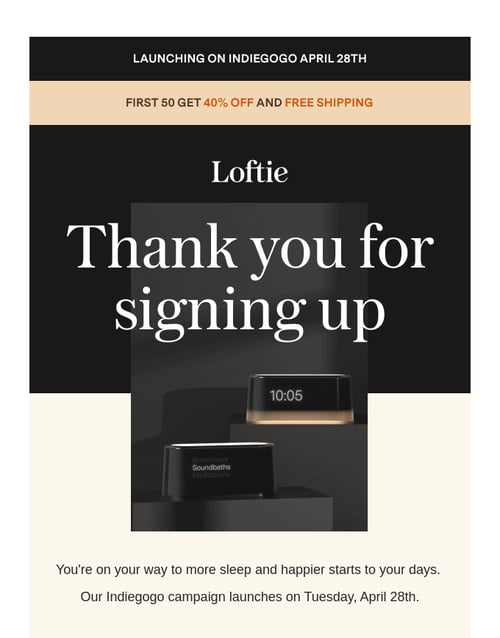
Welcome emails are usually the first line of communication in email marketing. Users opt-in to receive emails, and in a few minutes, they receive a welcome from the company. This style of email usually involves:
- Thanking your subscriber
- Introducing them to the company
- Setting expectations
- Creating a call to action
Abandoned Cart Email
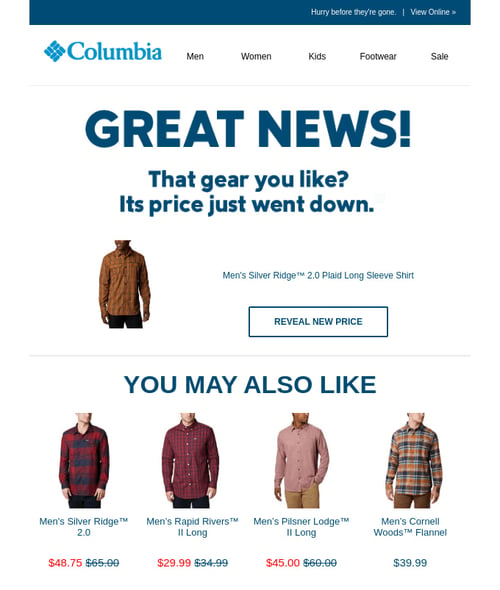
When a customer fails to complete a transaction, companies often follow up with an abandoned cart email. Shopify recommends sending three abandoned cart emails — after the first hour, after the first day, and on the third day. These emails typically include an image of the item and a clear call to action (CTA). You will find that some abandoned cart emails attempt to entice the customer with an added discount.
Curated Email
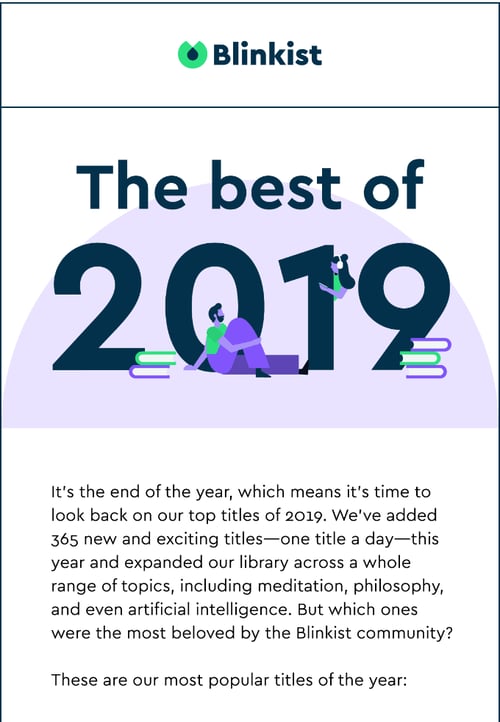
Curated emails combine the best content your company has to offer. The content is gathered over a specific time or covers a particular topic. These emails include articles, images, links, and any other content that suits your subscribers.
Promotion Email
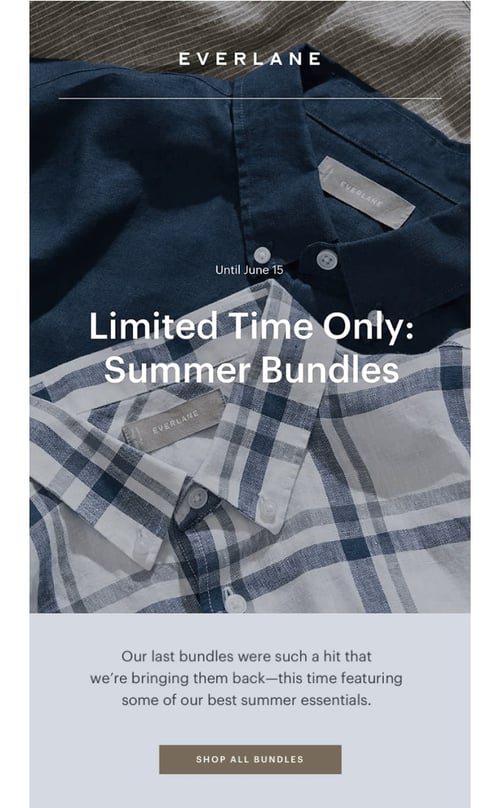
The purpose of a promotional email is simple — promote your product or service to secure a sale. It improves customer retention and increases brand awareness as well. Promotional emails always include a clear CTA and are often enhanced with a promotional code to entice shoppers.
Back In Stock Email
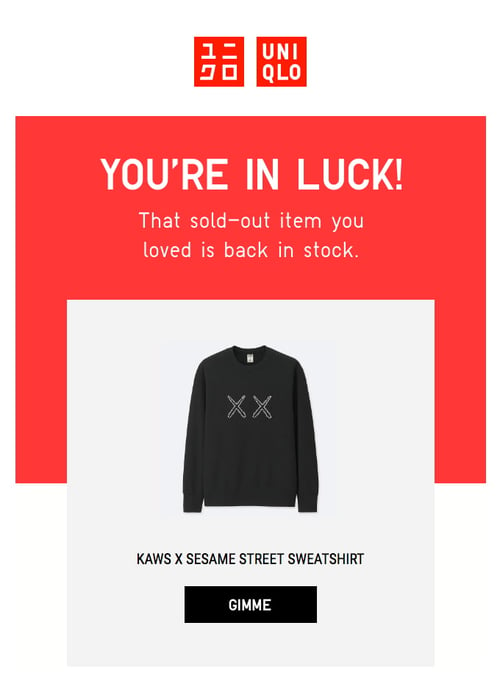
Many companies offer customers the opportunity to be notified when an out-of-stock item is back in store. If and when that item returns, the list receives a “back in stock” email. This email format focuses on one product and should create a sense of thankfulness or urgency in the customer.
Outbound Email Marketing Examples
As previously mentioned, most email inboxes overflow with examples of inbound marketing. Alternatively, outbound emails filter to many spam or junk folders. It occurs because outbound emails are often sent in bulk, and servers like Gmail and Yahoo flag these emails as unsolicited. With outbound emails, the first goal is to get through spam folders. The second goal is to keep your potential customer reading until they get to your CTA.
While outbound emails are typically frowned upon in marketing, they’re a useful prospecting technique for salespeople. Most deals begin with a cold email, which can take on the following formats.
The Attention Grabber
The AIDA formula is an effective email template to follow for outbound sales emails. The acronym stands for attention, interest, desire, and action. First, get their attention. Ask a question or state a fact. Second, build their interest. Tell a story to get them invested. Third, create the desire to buy from you. Purposely leave out a crucial piece of information. Invoke a sense of FOMO — fear of missing out — within them. It leads to the fourth step — action. Be very clear in your CTA. Instead of prompting for more information, these emails should drive a specific action, such as downloading a document or visiting a website.
The Bridge
You are at point A. You need to get to point B. Here is your bridge. Bridging the gap is one common tactic of an outbound email. Describe the current reality of your potential customer. Present them with a depiction of how their situation would change if you solved the problem. Lastly, give them the bridge. How will your product or service get them there? Research suggests that rewards may be more effective than punishments. Pose your solution as a reward for their efforts.
The People Pleaser
People love compliments. In the outbound email we’ve dubbed “the people pleaser,” reel them in with a compliment. Don’t be over the top, but keep it simple and sincere. Follow up with a practical example of a relevant problem. Here was a problem, and this is what happened when we were able to fix it — cause and effect. Now, make a request. Give them an idea of how your company can benefit them, and close this email with a CTA to get more information.
The Problem Solver
“It gets worse before it gets better.” In this type of outbound email, it’s your job to make it worse. Let’s pretend we’re headhunters. Present a problem. For example, a potential customer has a difficult time filling an in-person job position within their company. Make it worse. Mention statistics on the growing trend to work from home. Now, be their problem solver. Offer a solution for how you can help. People find value in products or services that make their lives easier, and solving their problems is significant and valuable.
The “Do What You Want”
In psychology, this is the “but you are free” technique. In the art of persuasion, you’re trying to convince someone to believe something you want them to. It means you’re “threatening their freedom” to choose. While this sounds extreme, an important tactic is giving them back their choice by reminding them that they can do what they want.
Offer them your product or service. Make a request. Before you close, give them an out. This might seem counterintuitive, but Psychology Today reported that 42 studies with nearly 25,000 participants found that the “but you are free” technique increases compliance.
Email marketing is inbound and outbound.
Email marketing is both inbound and outbound; however, it is up to you to decide which method is effective and productive for your business. Inbound email marketing allows you to build on a relationship that your customer sought out. Outbound email marketing asks potential customers to form a new relationship. They follow different methodologies, but both have been proven successful.
Editor's note: This post was originally published in January 2010 and has been updated for comprehensiveness.
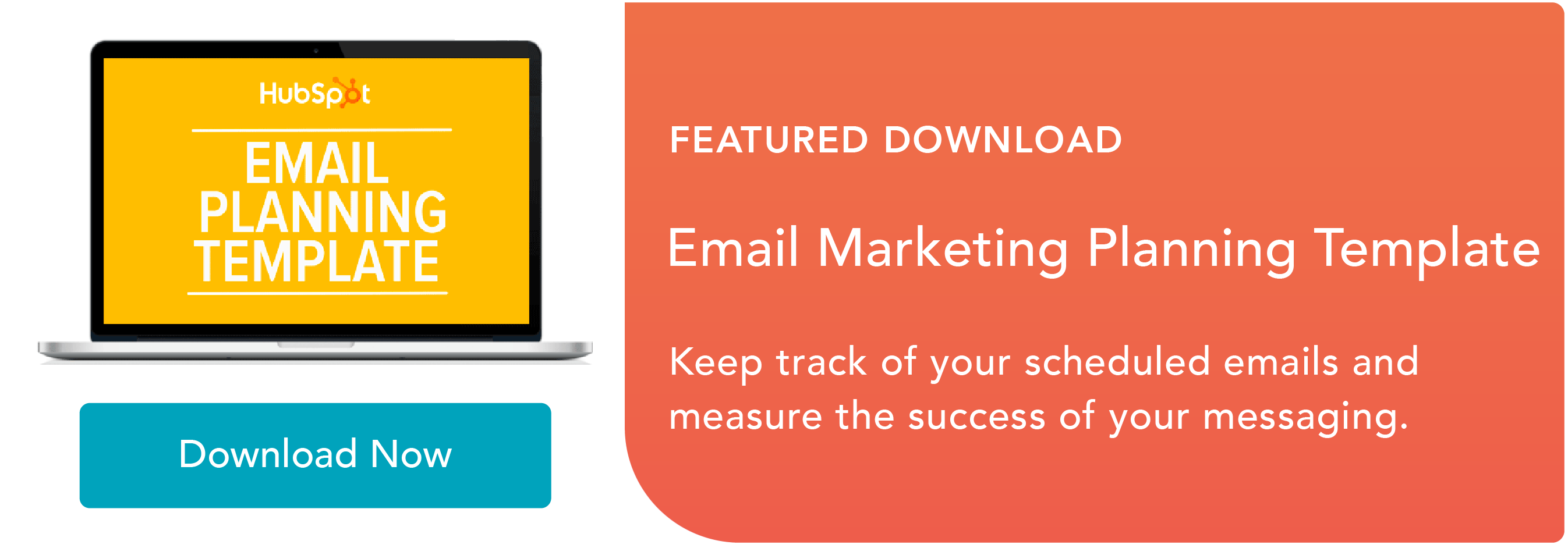
from Marketing https://blog.hubspot.com/blog/tabid/6307/bid/5526/is-email-marketing-inbound-or-outbound.aspx
Forget the dress debate that broke the internet a few years ago. Forget whether you heard Yanny or Laurel from a computer-generated voice. The matter we are settling in the next great debate — is email marketing inbound or outbound?
There are many ways to market a product or service, including search engine marketing (SEM), content marketing, social media marketing, and email marketing. The concept of inbound and outbound applies to most of them, but how does it apply to emails?
Read on to learn more about inbound and outbound emails and how these methods are applied to marketing today.
Inbound marketing is a business methodology that attracts customers by creating valuable content and experiences tailored to them. It includes blog posts, social media posts, infographics, and — you guessed it — emails.
Email marketing is the process of targeting your audience and customers through email. The statistics on email are impressive and lend to its importance as a marketing tool. With 4 billion daily email users, it is necessary to focus on strategy and best practices to reap the benefits of improved sales, generated traffic, increased leads, and more.
Is email marketing inherently inbound? Melanie Attia of Campaigner states, “Email marketing is about engaging in a dialogue which is both inbound and outbound.” However, Justin Premick of AWeber Communications would tell you that “if you’re doing email marketing right, it’s inbound.”
To better understand the differences between inbound and outbound email marketing, we’ll look at three aspects for each:
- Audience & Engagement
- Reach & Speed
- Cost
Inbound Email Marketing Audience & Engagement
Inbound email marketing follows the marketing funnel — a content plan for every stage of the buyer’s journey. The steps are attracting strangers, engaging prospects, and securing customers.
The first stage of this process is to build brand awareness through blog posts, social media, and SEM. It trickles into the second step where customers express interest. They opt in to join email lists or follow a social media account. Inbound email marketing takes place during this stage. Because inbound marketing sends messaging to interested parties, marketers increase their chances of having customers complete the buyer’s journey with a purchase.
Inbound Email Marketing Reach & Speed
With inbound marketing, the goal is to attract an interested audience. Content, such as blog posts and social media posts, is meant to draw in potential customers. This process takes time. It can take months and years to build an email list of thousands. The same growth happens a lot more quickly for outbound email marketing.
Inbound Email Marketing Cost
While cost does not affect whether email marketing is inbound or outbound, there is a difference between the two methods. Inbound marketing costs 62% less than outbound marketing for a few reasons. First, the ROI is higher since you’re targeting a warm list of leads. Second, inbound lists tend to have fewer subscribers, which keeps email service provider costs down, since they often charge by number of email sends.
How does outbound email marketing compare to inbound email marketing?
In general, outbound marketing involves reaching out to potential customers to gauge interest in a product or service. Outbound marketing is interruptive in that it finds an audience regardless of whether the audience sought it out or not. Examples of this are TV ads, radio ads, billboards, banner and display ads, telemarketing, and outbound emails.
Outbound Email Marketing Audience & Engagement
The most significant difference between inbound and outbound email marketing is how they target audiences and interact with them.
Whereas inbound email marketing only targets customers who’ve expressed an interest in your product or service, outbound email marketing does not require recipients to opt-in to receiving emails. Companies will acquire email lists and essentially “cold call” their audience with information. The purpose behind this tactic is to reach as many people as possible, regardless of expressed interest.
The benefit of inbound email marketing is that it interacts with an interested audience; however, outbound email marketing has an added benefit of reach and speed.
Outbound Email Marketing Reach & Speed
Another significant difference between inbound and outbound email marketing is each method’s reach and speed. With outbound email marketing, you would see a larger reach in a shorter amount of time.
Why? Because the goal of outbound marketing is to push. Marketers push the message to as many people as possible. As such, outbound email marketing lists tend to have a greater reach than inbound email marketing lists.
Although outbound tactics can build a larger list in a shorter period, they lead to more unsubscribers. Outbound emails are unsolicited emails. It is more likely your audience will unsubscribe from something they did not ask for compared to something they have shown interest in.
Outbound Email Marketing Cost
There is an added cost associated with outbound tactics. Email marketing platforms such as Mailchimp and Sendgrid have increased costs associated with the number of contacts and number of emails you send. Ultimately, the more people you have on your email list, the more you pay for email marketing. With outbound emails targeting a wider audience, this explains the difference in cost.
Understanding the differences between inbound and outbound email marketing is the first step to creating a successful email strategy.
Inbound and outbound email marketing have differences in:
- Audience & Engagement: Inbound email marketing targets a small list of interested subscribers, while outbound email marketing targets anyone it can send a message to.
- Reach & Speed: Inbound email marketing lists are typically slower to build and much smaller to start. Outbound email marketing lists are much larger, and you don’t have to build them from scratch, specially if you purchased an email list.
- Cost: Inbound email marketing costs less on average due to a smaller subscriber count and increased ROI. Outbound email marketing costs more because the more emails you send, the larger your expenditure. It also doesn’t turn a lot of recipients into costumers; thus, the ROI is significantly lower.
Audience and engagement, reach and speed, and cost are understood differences between inbound and outbound email marketing. In the coming examples, you can see the differences.
Inbound Email Marketing Examples
If you have made a purchase on a website or opted in to an email list, chances are your inbox is flooded with examples of inbound email marketing. Once a company can establish a relationship, they follow up with emails meant to drive you to purchase and keep you interested in what they have to offer.
Welcome Email

Welcome emails are usually the first line of communication in email marketing. Users opt-in to receive emails, and in a few minutes, they receive a welcome from the company. This style of email usually involves:
- Thanking your subscriber
- Introducing them to the company
- Setting expectations
- Creating a call to action
Abandoned Cart Email

When a customer fails to complete a transaction, companies often follow up with an abandoned cart email. Shopify recommends sending three abandoned cart emails — after the first hour, after the first day, and on the third day. These emails typically include an image of the item and a clear call to action (CTA). You will find that some abandoned cart emails attempt to entice the customer with an added discount.
Curated Email

Curated emails combine the best content your company has to offer. The content is gathered over a specific time or covers a particular topic. These emails include articles, images, links, and any other content that suits your subscribers.
Promotion Email

The purpose of a promotional email is simple — promote your product or service to secure a sale. It improves customer retention and increases brand awareness as well. Promotional emails always include a clear CTA and are often enhanced with a promotional code to entice shoppers.
Back In Stock Email

Many companies offer customers the opportunity to be notified when an out-of-stock item is back in store. If and when that item returns, the list receives a “back in stock” email. This email format focuses on one product and should create a sense of thankfulness or urgency in the customer.
Outbound Email Marketing Examples
As previously mentioned, most email inboxes overflow with examples of inbound marketing. Alternatively, outbound emails filter to many spam or junk folders. It occurs because outbound emails are often sent in bulk, and servers like Gmail and Yahoo flag these emails as unsolicited. With outbound emails, the first goal is to get through spam folders. The second goal is to keep your potential customer reading until they get to your CTA.
While outbound emails are typically frowned upon in marketing, they’re a useful prospecting technique for salespeople. Most deals begin with a cold email, which can take on the following formats.
The Attention Grabber
The AIDA formula is an effective email template to follow for outbound sales emails. The acronym stands for attention, interest, desire, and action. First, get their attention. Ask a question or state a fact. Second, build their interest. Tell a story to get them invested. Third, create the desire to buy from you. Purposely leave out a crucial piece of information. Invoke a sense of FOMO — fear of missing out — within them. It leads to the fourth step — action. Be very clear in your CTA. Instead of prompting for more information, these emails should drive a specific action, such as downloading a document or visiting a website.
The Bridge
You are at point A. You need to get to point B. Here is your bridge. Bridging the gap is one common tactic of an outbound email. Describe the current reality of your potential customer. Present them with a depiction of how their situation would change if you solved the problem. Lastly, give them the bridge. How will your product or service get them there? Research suggests that rewards may be more effective than punishments. Pose your solution as a reward for their efforts.
The People Pleaser
People love compliments. In the outbound email we’ve dubbed “the people pleaser,” reel them in with a compliment. Don’t be over the top, but keep it simple and sincere. Follow up with a practical example of a relevant problem. Here was a problem, and this is what happened when we were able to fix it — cause and effect. Now, make a request. Give them an idea of how your company can benefit them, and close this email with a CTA to get more information.
The Problem Solver
“It gets worse before it gets better.” In this type of outbound email, it’s your job to make it worse. Let’s pretend we’re headhunters. Present a problem. For example, a potential customer has a difficult time filling an in-person job position within their company. Make it worse. Mention statistics on the growing trend to work from home. Now, be their problem solver. Offer a solution for how you can help. People find value in products or services that make their lives easier, and solving their problems is significant and valuable.
The “Do What You Want”
In psychology, this is the “but you are free” technique. In the art of persuasion, you’re trying to convince someone to believe something you want them to. It means you’re “threatening their freedom” to choose. While this sounds extreme, an important tactic is giving them back their choice by reminding them that they can do what they want.
Offer them your product or service. Make a request. Before you close, give them an out. This might seem counterintuitive, but Psychology Today reported that 42 studies with nearly 25,000 participants found that the “but you are free” technique increases compliance.
Email marketing is inbound and outbound.
Email marketing is both inbound and outbound; however, it is up to you to decide which method is effective and productive for your business. Inbound email marketing allows you to build on a relationship that your customer sought out. Outbound email marketing asks potential customers to form a new relationship. They follow different methodologies, but both have been proven successful.
Editor's note: This post was originally published in January 2010 and has been updated for comprehensiveness.


No hay comentarios:
Publicar un comentario